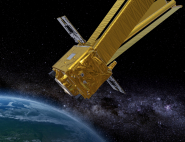Galileo
GALILEO AND THE TOWER OF PISA (CIRCA 1600)
Galileo did not actually drop any objects from the top of the Tower of Pisa, but he analysed free fall theoretically and suggested other ways of comparing falling bodies.
Galileo affirmed repeatedly that all falling bodies have the same motion— assuming that air resistance is negligible—in the Earth’s gravitational field. Did he actually perform the experiment from the Tower of Pisa, where he supposedly checked that two different bodies fall at the same speed? He discussed this experiment a great deal and studied the effects of friction on motion, which proves that he was familiar with the main issues. However, he probably did not conduct the experiment, as he knew it would be impossible to do with sufficient accuracy. To test the validity of the universality of free fall, Galileo therefore proposed alternatives based on fine analysis of the accelerated motion of mobile bodies and on pendulums swings.
![]()
Portrait of Galileo painted by Ottavio Leoni.
PENDULUMS BEAT TIME (1638)
Galileo used pendulums to compare the motion of different types of bodies.
Galileo knew that the universality of free fall would be difficult to check owing to friction, which is why he sought alternatives to dropping objects from a height. At first, as there was potentially little difference between two objects, he suggested short drop tests, cumulating the short gap between the arrivals of the two bodies. As a consequence, the total time gap would be easily noticeable. Then, he minimized friction by selecting very slow movements, for example using inclined planes. He went even further when he proposed a practical test on which all subsequent tests would be based for the next three centuries: he compared the number of oscillations of two pendulums. He did not observe any difference, as he wrote “coincidence is such that whether one thousand swings or on one hundred, the first is not ahead of the other in the slightest way”. It was the first test of the equivalence principle, whose relative accuracy could be estimated at 10-2.
![]()
Reconstitution of the pendulums used by Galileo. On the left, four pendulums with different spheres were used to check their isochronism. On the right, pendulums of variable lengths enabled the relationship between the period of oscillation and length to be established.

